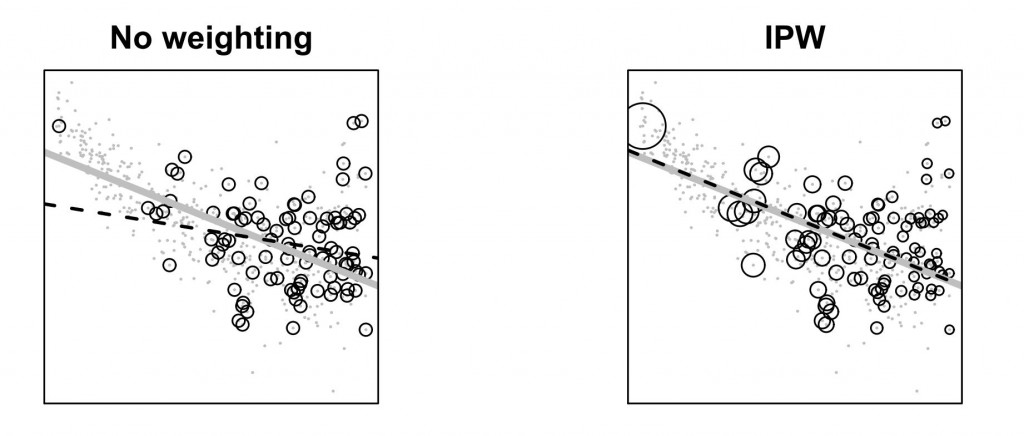In case you haven’t followed the chatter about Daryl Bem’s forthcoming paper on evidence of “precognition” and “premonition” (a.k.a. “psi” effects, or more colloquially, psychic intelligence), you can read a synopsis at the Freakonomics blog (link). The comments on the blog page are quite amusing. More interesting is how Wagenmakers et al. have leapt on this as a “teachable moment” for discussing perils and pitfalls in commons modes of contemporary data analysis. Continue reading ““Psi” as a teachable moment on methods and data analysis”
NAS report: Prevention & Treatment of Missing Data in Clinical Trials
The National Research Council has released a prepublication version of their report on missing data in randomized trials (link): Continue reading “NAS report: Prevention & Treatment of Missing Data in Clinical Trials”
More on numeric intuition: Log or linear? (Science, 2008)
Following up on the previous post, I thought I’d look a little more into Spelke’s research, and found this really cool paper from Science in 2008: “Log or Linear? Distinct Intuitions of the Number Scale in Western and Amazonian Indigene Cultures,”‘ by Stanislas Dehaene, Véronique Izard, Elizabeth Spelke, and Pierre Pica (ungated link). Here’s the abstract,
The mapping of numbers onto space is fundamental to measurement and to mathematics. Is this mapping a cultural invention or a universal intuition shared by all humans regardless of culture and education? We probed number-space mappings in the Mundurucu, an Amazonian indigene group with a reduced numerical lexicon and little or no formal education. At all ages, the Mundurucu mapped symbolic and nonsymbolic numbers onto a logarithmic scale, whereas Western adults used linear mapping with small or symbolic numbers and logarithmic mapping when numbers were presented nonsymbolically under conditions that discouraged counting. This indicates that the mapping of numbers onto space is a universal intuition and that this initial intuition of number is logarithmic. The concept of a linear number line appears to be a cultural invention that fails to develop in the absence of formal education.
I wonder if anyone has spelled out the implications of this insight for, say, intuitive risk judgments?
McCandless TED talk on data visualization
Here’s the talk, from last August: link. I am still trying to understand what the current explosion in interest in “data visualization” is all about. Watching the talk, I see that putting numbers into pictorial form certainly helps to get around cognitive limitations in appreciating relative magnitudes, especially when the numbers are really large. (It reminds me of some of the points that cognitive scientist Elizabeth Spelke discussed during her appearance on what is probably my favorite episode of Charlie Rose [link]. Spelke discussed how cognitive processes for interpreting large numbers are much different than small numbers, and that this is evident when one watches how children develop a capacity to understand numbers larger than 3.) But what I see in data visualization galleries are things that look neat, but don’t do anything more than achieve the one feat (although no minor one) of representing relative magnitudes. Often I feel like we’re just looking at dolled up pie charts. I’ve seen Hans Roslings animated charts, and they certainly are neat, but again pretty much limited to displaying differences in relative magnitudes, in these cases flows or trends, rather than levels. Is visualization more than representing relative magnitudes?

